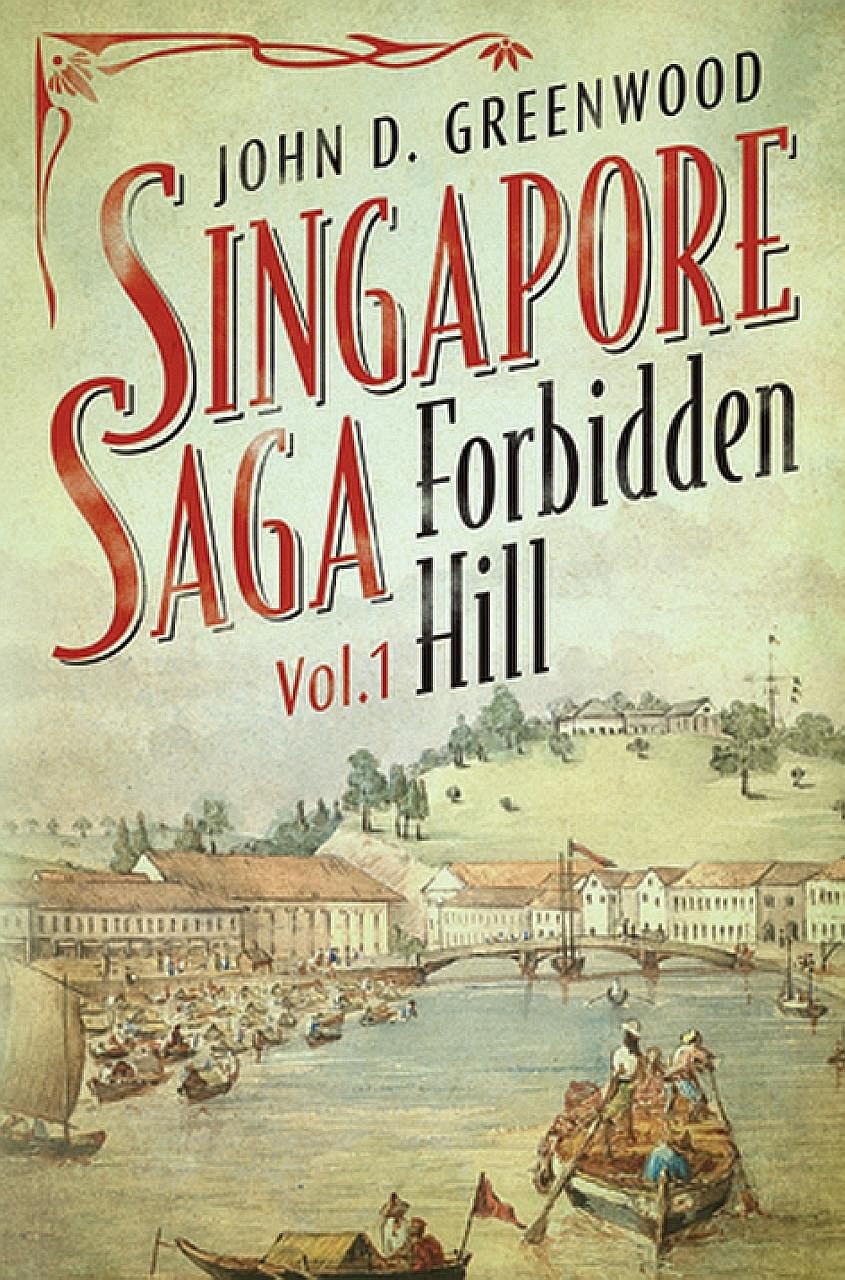Bloodthirsty pirates, runaway concubines and lots of Scots - these are but some of the colourful characters that people the pages of Singapore Saga, an ambitious new series of novels that will span 100 years of Singapore's early history.
The series, by Scottish professor John D. Greenwood, comes out ahead of Singapore's bicentennial celebrations next year, with its first volume Forbidden Hill kicking off with the arrival of the British on the island.
The celebrations, which Prime Minister Lee Hsien Loong announced in his New Year's Day message on Dec 31, 2017, mark the 200th anniversary of Sir Stamford Raffles' landing in 1819.
This is the first work of fiction for Greenwood, a professor of philosophy and psychology who spent more than a decade in Singapore lecturing at the National University of Singapore (NUS). He is now at the City University of New York's graduate centre.
Greenwood, 65, first got the idea to write a book about Singapore's history in 2000. A Scottish friend was returning his copy of Edward Rutherfurd's epic novel London - which charts the history of London from 54BC to 1997, when the book was published - and remarked that somebody should write a similar book about Glasgow or Edinburgh.
Greenwood replied that somebody should write a similar book about Singapore. He was so transfixed by the idea that he could not sleep that night and found himself up at 2am writing a story about a street opera singer from China, who is shipwrecked on the island that will become Singapore and rescues a Malay fisherman from vicious pirates. They marry and later witness the arrival of Raffles. This went on to become the book's prologue.
He intended the book to span a century from 1819 to 1919, but realised after half a million words that he had covered only about 50 years.

On advice from another historical novelist, he broke this up into three books, the second of which will come out next year and ripple outwards to cover events elsewhere that impacted Singapore, such as the Taiping Rebellion in China. The whole series is expected to run to six books.
Greenwood was adamant that he would not follow in the footsteps of some of the more sensational historical novels out there, in which Raffles would do things such as sail up the Singapore river in big ships - not geographically possible - and single-handedly defeat whole pirate strongholds.
Greenwood, who is married with two children in their 30s, spent 18 years writing and researching the book, returning regularly to the NUS library to examine microfiches of old newspaper clippings.
"What surprised me is how violent it was," he says of the old days. Pirates were rampant in the waters around the island and the news was rife with reports of "run amok", which meant someone had gone on a frenzied killing spree in the street.
He is "full of admiration" for the long way Singapore has come to its bicentennial, but has no wish to lionise the figures who gave it its start, whom he portrays in the book "warts and all".
Raffles, for instance, is shown to be a man of ideas but ineffectual at seeing many of them through, while the likable Colonel William Farquhar turns a blind eye to slavery and the Temenggong Abdul Rahman and Sultan Hussein Shah abet piracy and keep slaves of their own.
Greenwood feels that aside from administration and keeping Singapore a largely free port, the British contributed little to the economic and social development of the settlement, unlike the Peranakan and Nanyang Chinese, Arabs, Indians, Jews, Armenians and so on. "They were the ones who invested their money and became the wealth creators, not the British or Europeans, a small community who did fine by themselves but little on the scale of these fledgling Singaporeans."
Sharing space with well-known figures from textbooks are a multitude of fictional characters from all walks of life, from swashbuckling British adventuress Sarah Hemmings to axe-wielding assassin Lee Yip Lee and Siti, a slave of the Sultan's who orchestrates the escape of 27 women from his harem. The novel is told from the perspective of more than 20 characters.
Greenwood admits he has some apprehension about writing these books as a foreigner. Should they go down in flames, he adds, he will next try to write a history of his own hometown of Elgin, where the Scottish king Macbeth (of the famous but historically inaccurate Shakespeare tragedy) was from.
"What right do I have to write this story about Singapore?" he muses. "I would be perfectly happy if a Singaporean did it, really. But I was driven to do it by my passion for the subject. The best I can do is to make sure the books are true to form and that the characters are authentic."
• Singapore Saga Vol. 1: Forbidden Hill ($19.90) is available at major bookstores.


